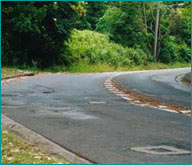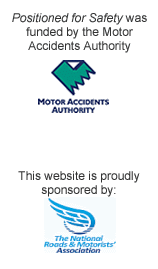Safer Roads

The key issues identified for road environment safety are:
- Road fixtures and furniture may create crash and injury risks for motorcyclists.
- Maintenance and upgrading practices may create crash and injury risks for motorcyclists.
- The designers of new roads are not required to consider the specific vulnerabilities of motorcyclists.
- Crash records are not used systematically to monitor and guide road maintenance practices.
The MCC objectives for Safer Roads are to:
- Reduce the incidence and severity of single vehicle motorcycle crashes.
- To ensure motorcycle safety is accommodated in the design and maintenance of roads and the road environment.
- To ensure motorcycles are recognised as a growing and distinct mode of transport in all road planning and road safety programs.
Every motorcyclist knows that road conditions that are no problem for a car, can be dangerous traps for a motorcycle. Non-motorcyclists are less likely to understand this and few road engineers appear to appreciate the handling characteristics of motorcycles.
Forty percent of motorcycle crashes are single vehicle crashes. It is often assumed that such crashes are due to excessive speed, but poor road design and surface condition also play a part. As a part of the strategic planning process, we undertook a review of NSW crash data. We found that road surface hazards such as loose gravel on a sealed surface were a contributing factor in 21% of single vehicle motorcycle crashes.
Road authorities need to be made aware of the dangers for motorcyclists that are created by the poor design and maintenance of roads.
Motorcyclists need to develop their skills to read the road surface, to anticipate, avoid or control loss of traction.
- All motorcyclists can help to improve the roads in their local area by working with their local road authorities.
Who are the road authorities?
Road authorities design, build and maintain the road network. They are responsible for the safety of the road environment and may be held liable for damages resulting from crashes caused by the condition or design of their roads or placement of road furniture (ie sign posts, steel plates, crash barriers or raised lane markers).
The RMS is the road authority responsible for freeways, motorways and all State and National highways. These types of roads are called Classified Roads and cover about 20% of the roads in NSW.
Local councils are the road authorities responsible for most of the remaining 80% of the road network including all local and regional roads.
- Private roads and roads within national parks and forestry areas are the responsibility of the owner or relevant government agency.
Road Works
Road authorities are not always responsible for the road works that disrupt traffic and leave the surface scarred. Roads are usually dug up by utility companies and developers in order to access services such as telephone, water, sewerage, gas and electricity. It is often these road works that are covered with the temporary steel plates that are so slippery for motorcyclists. Such road works require the permission of the relevant road authority, who may be held liable if they fail to ensure the safety of the road surface during or on completion of the work.
Road Safety Audits
There are design and maintenance standards to which all roads should conform. A Road Safety Audit is an assessment of a road or segments of road or new road designs against the standards to identify safety issues. Thematic audits can be undertaken to identify hazards specific to motorcyclists which may other wise not be noted by the road authorities.
Motorcyclists who are aware of a hazard that is due to permanent features of a road should notify their local council or the RMS. A road safety audit may be undertaken to identify appropriate solutions.
Collisions with fixed roadside objects were involved in 36% of single vehicle motorcycle crashes, but 55% of all motorcycle fatalities in NSW. The main roadside objects involved in fatal single vehicle motorcycle crashes are guardrails and fences (21%), other road structures (15%), trees or bushes (14%) and poles or signposts (14%). (ATSB, Review of Wire Rope Safety Barriers:Working Party Report, June, 2000).

